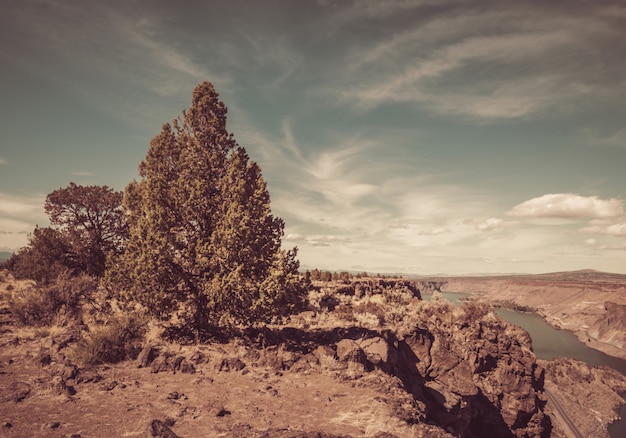Kalahari Desert – Fascinating Facts and Intriguing Insights

The Kalahari Desert is located in Southern Africa, covering parts of Botswana, Namibia, and South Africa.
It is one of the largest sandy deserts in the world, spanning over 900,000 square kilometers.
Despite being classified as a desert, the Kalahari receives more rainfall than typical deserts, allowing some vegetation to thrive.
The term Kalahari is derived from the Tswana word Kgala, meaning the great thirst.
Although the Kalahari is mainly sandy, it also consists of grasslands, salt pans, and fossil rivers that occasionally fill with water after rains.
The San people, also known as Bushmen, have inhabited the Kalahari for thousands of years and have adapted to its harsh conditions.
The climate in the Kalahari is classified as a semi-arid or arid climate, characterized by hot days and cool nights.
Despite the limited water sources, many species have adapted to survive in the Kalahari, including lions, giraffes, zebras, and meerkats.
The Kalahari Desert is home to unique species such as the Kalahari lion, brown hyena, and African wild dog.
The Kalahari is a popular destination for wildlife enthusiasts and photographers due to its diverse animal and plant life.
The meerkat, a small mammal known for its vigilant and social behavior, is commonly found in the Kalahari.
The San people have extensive knowledge of the desert’s plants and animals and utilize their resources for food, medicine, and shelter.
Kalahari Desert – Fascinating Facts and Intriguing Insights part 2
The Kalahari is known for its stunning landscapes, including vast sand dunes, expansive salt pans, and acacia savannahs.
The term desert often brings to mind a lifeless, barren landscape, but the Kalahari is bustling with life and unique adaptations.
The Kalahari desert experiences extreme temperature fluctuations, reaching scorching temperatures during the day and near-freezing temperatures at night.
The iconic springbok antelope can be found in large herds in the Kalahari, showcasing incredible speed and agility.
The Bat-eared fox, named for its large ears, is often spotted in the Kalahari and feeds primarily on insects.
The Kalahari is rich in bird species, including ostriches, secretary birds, hornbills, and numerous migratory birds.
The black-maned Kalahari lion is known for its unique appearance and is a popular attraction for safari-goers in the region.
The Nama people, who are indigenous to the Kalahari, have a rich cultural heritage and continue to practice their traditional customs.
The Kalahari Desert has served as a backdrop for several popular movies, including The Gods Must Be Crazy.
The Gemsbok, a large antelope species with striking long horns, is well-adapted to the Kalahari’s challenging conditions.
Despite its arid nature, the Kalahari supports a surprising diversity of plant life, including various grasses, shrubs, and succulents.
The Kalahari Desert is home to several protected areas, such as the Central Kalahari Game Reserve and Kgalagadi Transfrontier Park.
The Tsodilo Hills in Botswana, located within the Kalahari, are a UNESCO World Heritage Site and home to many ancient rock art paintings.
The Kalahari Desert is a prime stargazing location due to its minimal light pollution and clear skies.
The quiver tree, a unique succulent plant species, can be found scattered throughout the Kalahari.
The Kalahari is an important region for scientific research, particularly in the fields of ecology, climate change, and archaeology.
The red sands of the Kalahari make for stunning landscape photography, especially during sunrise and sunset.
The San people have a deep spiritual connection to the Kalahari, considering it sacred and practicing ancient rituals within its boundaries.
Although water sources in the Kalahari are scarce, natural depressions in the sandy terrain, known as pans, can retain water for extended periods.
The diverse animal life in the Kalahari includes pangolins, a rare and unique mammal that is highly sought after due to its scales.
The Kalahari Desert is an important ecosystem for maintaining biodiversity and supporting migratory species.
The wind-blown sand dunes in the Kalahari create ever-changing patterns and shapes, making it a photographer’s paradise.
Several indigenous languages are spoken in the Kalahari, including Tswana, Khoi-San languages, and Afrikaans.
The San people use various hunting techniques, including poison derived from the poisonous milk of the Euphorbia plant, to catch prey.
The Kalahari Desert has a rich history, with evidence of human occupation dating back over 100,000 years.
The Kalahari region is known for its stunning sunsets, where vibrant colors illuminate the vast expanse of the desert.
The unique geological formations in the Kalahari, such as the Kubu Island and Gcwihaba Caverns, are worth exploring for adventurous travelers.
The Kalahari plays host to an array of insect life, including fascinating creatures like scorpions, dung beetles, and trapdoor spiders.
The San people have intricate knowledge of the Kalahari’s medicinal plants, using them to treat various ailments and conditions.
The Kalahari Desert is known for its silence, providing a serene and tranquil environment for those seeking solitude.
Droughts are not uncommon in the Kalahari, leading to periods of scarcity for both humans and wildlife.
The San people have a deep respect for the Kalahari’s wildlife and practice sustainable hunting practices to ensure the ecosystem’s balance.
The Kalahari Desert is a testament to the resilience of life, where countless species have adapted and thrived in one of the world’s most challenging environments.

